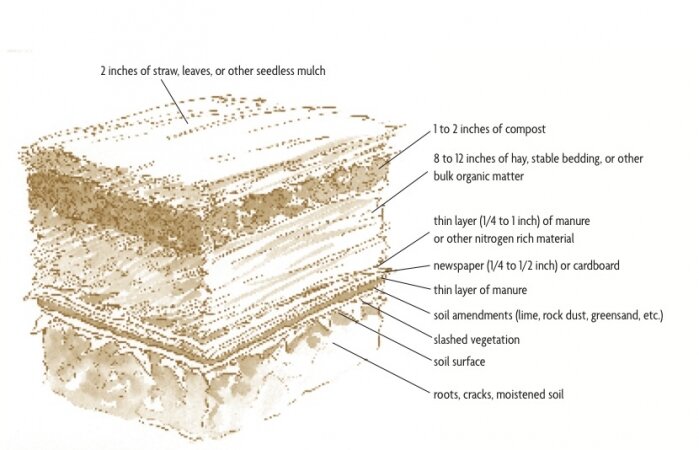Growing Toward the Light: Starting Your Vegetable Garden
“Busy hands and idle minds have knitted many a sweater; Busy minds and idle hands have knitted many a brow.” Maryrose Wood, Author & Amateur Gardener
While the world around us feels increasingly uncertain and chaotic, Mother Earth’s natural rhythms continue on unchanged. It’s officially springtime in New Hampshire; the days are getting longer, the first spring shoots are popping up, and the time to plant garden vegetable seeds and seedlings is upon us. Many among us are experiencing increased frustration or anxiety, and have extra time to indulge these worries. Instead, why not think about starting your own vegetable garden? There has never been a better time to think about self-sufficiency and food security. Getting your head and hands buried in garden planning is just the thing to bring some light, joy, and creativity – not to mention fresh produce – into your life!
Before You Begin Your Veggie Garden
At Distinctive Gardening, our growing season is shaped by New England’s distinct seasons and short growing calendar. Starting your vegetable garden begins with understanding your environment. What hardiness zone do you live in? What is this year’s predicted first and last frost date? Annual rainfall and sun days? Armed with this information, you’ll be better equipped to read seed pack instructions and plan your garden successfully.
Planning Your Veggie Garden: Site, Supplies, Crop Choices
Site: Depending on the space you have available, you may choose between gardening with containers and pots, a raised bed, or turning over a patch of soil.
Containers and Pots: Even if you live in the city, you can still grow your own fresh produce right from your home. Whether you’ve got a balcony, porch, or just a sunny, south-facing windowsill, lettuces, herbs and even tomatoes and peppers are all in the realm of possibility!
Raised Bed: Perfect for the compact yard, growing veggies in a raised bed allows you to work with fertile, fluffy soil that warms up more quickly in the spring. Plus, it means less distance to bend for planting, weeding, and harvesting. You can make your own 4x4 raised beds on a budget.
Turning a Patch of Soil: Your goal is a sunny, grass-free, root-free rich soil medium with adequate drainage to work with, at least 6-8” deep, and ideally not too sandy or clay-heavy. This may be accomplished with a shovel, rake, and some elbow grease, a rototiller, or you may even consider this easy “lasagna” gardening method. Once, you know what space you are working with, draw a simple sketch of your plot and a wishlist of vegetables you’d like to see on your table this summer.
Supplies: Essential items will need to be sourced if not borrowed. While the big box stores might seem like a one-stop-shop, consider your local nursery and farmers instead. Small businesses need our support more than ever right now, and local nurseries generally provide a higher-quality product that is suitable for your climate. Here are the essential items to begin your garden:
Soil – potting soil for containers, garden soil for your raised bed
Containers/pots - Get creative before heading to the store. Do you already have something on hand in your basement or back porch? Does your neighbor?
Seeds and seedlings. Check your local farmer’s markets, nursery or scroll below for our list of suggested seed suppliers.
Additional compost/manure for your raised beds and garden plots.
Watering can or hose with sprinkler nozzle
Shovel and trowel
Gardening gloves, if that’s your thing.
The Best Part: Choosing Your Crops
Just 200-square-feet of productive garden can be enough to feed one person year-round. However, anything you can grow to supplement your kitchen is worth your time and energy. Once you’ve tasted your first home-grown, sun-warmed tomato there is simply no returning to lesser store-bought varieties!
Here are some great veggies to begin your vegetable growing journey:
Tomatoes*
Lettuce*
Spinach
Radishes
Kale and Swiss chard*
Beets
Peppers*
Cabbage*
Potatoes
Cucumbers*
Summer squash and zucchini*
Onions from “sets”
*These crops are generally available at garden stores/nurseries as transplant starts. Others should be directed seeded into your garden.
My Seeds & Starts are In – Now What?
Lots of questions start to arise when you begin getting your hands dirty. The good news is, people have been growing food for a LONG time. See below for a list of useful resources to help guide you and subscribe to our blog for future posts on a variety of garden topics. And remember to look within your community: neighbors, local farmers, green professionals, and amateur growers can be reached over the phone and on social media. During this difficult time, these connections can be as vital for us as for the plants.
We may not be able to plant toilet paper trees, but we most certainly can grow some juicy tomatoes, crisp greens, and pungent onions. May you all have brilliant green thumbs this season!
❧
Useful Resources:
Local Seed and Plant Sourcing:
Spider Web Gardens, Tuftonboro, NH
Petal Pushers Farm, Laconia, NH
Wayside Farm, North Sandwich, NH
Johnny’s Selected Seeds, Maine
Growing Information:
Northeastern Organic Farming Association of New Hampshire




